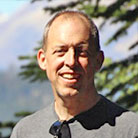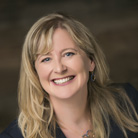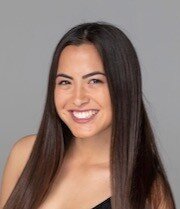
Each year consists of about 6,000 waking hours. Children in America, on average, spend about 1,000 of them in school.
In This Lesson

How many hours are in a school year?
Does time spent in school matter?
What is a Carnegie unit?
Do American kids spend a lot of time in school?
Do kids in other countries spend more time in school?
What counts as school time?
How many days in a school year?
Is all school time instructional time?
Do all students spend the same amount of time learning?
▶ Watch the video summary
★ Discussion Guide
Most American children spend about six hours per day in school—fewer in lower grades and more in higher ones. How are those hours actually spent? Are they sufficient? Does changing the number of hours make any difference?
Yes, time matters.
Learning takes time. Places where school hours deliver more “time on task” are places where students tend to learn more. This is both obvious and provable: one elegant study found a clever way to verify the educational impact of school time: it examined the effect of snow days (which vary in number by school and by year) on test results. Sure enough, when snow piles up, scores fall down. A day lost here or there actually does make a measurable difference.
For many students, the Pandemic inflicted the academic equivalent of a year of snow days.
The connection between time in school and learning has been deeply researched. More time focused on learning delivers more learning. The standard school day establishes a minimum baseline for the amount of time when students are supposed to have their brains turned on.
What is a Carnegie Unit?
A Carnegie Unit is 120 instructional hours
What exactly do we mean when we talk about school hours, or a school day, or a school week, or a school year? How much time is enough to add up to a “course”? Definitions like these matter when trying to compare programs.
About a century ago, the Carnegie Foundation played a pivotal role in setting standards for course credit, particularly for higher education. A Carnegie Unit is 120 school hours of instruction. The standard is still in use.
In recent years, critics, such as the leadership of Carnegie Foundation itself, have argued that the standard has "outlived its shelf life" and should be replaced. Why? Because the measure implies that "doing time" in a class is valuable, and systems have fossilized around it. Authentic learning should be the measure of educational attainment, not seat time.
International comparisons of school hours are tricky.
Schools in different parts of the country and around the world use time in varying ways, with different school calendars and seasonal breaks. In an effort to permit comparisons, or at least to spur inquiry, the Organisation for Economic Co-Operation and Development (OECD) collects global data about school hours, most recently in 2024.
Schools in America are comparatively time-intensive, according to the OECD data. American kids spend more time in classes than kids in most other countries do.
But the harder you scratch at the data, the harder it is to reach easy insights. The data is gathered by survey, and the methodology and even the questions vary from place to place. Grade level groupings used in the surveys are responsive to the different ways that schools are organized locally, and the surveys are massive.
What counts as school time?
International comparisons of education time are further complicated by the fact that not all learning time fits in the “official” system. In Japan and Korea, for example, formal school days are comparatively short, but there are more of them. Even more importantly, many families in these countries invest significant hours at private after-school and weekend "cram schools" that help their children prepare for standardized tests and college entry exams. Comparing only the official hours of school operation kind of misses the point.
A lot of learning can happen outside of official hours of school operation.
There's an apples-and-oranges problem, too. Does it make sense to compare school hours spent in systems that are teaching different things? In Japan and China, students spend many hours learning to write hundreds of characters accurately and legibly, a skill less important in countries with a simple alphabet. The OECD survey suggests that most European countries invest about a tenth of primary-grade school hours in the study of international languages. America doesn't participate in this part of the survey, but the difference is obvious: few American primary schools teach world languages at all.
Comparing the use of time for education is tricky even within the United States. Like many other states, California generally requires 180 days of school per year, including a specified minimum number of total hours for each grade level. Some school districts are shifting to a four-day school week, though this strategy risks harming young students. Some districts conduct school five days per week, but routinely send kids home early to allow for faculty training or meetings.
Amanda Ripley, a noted education researcher and author, focused significant attention on the different ways that schools use time in different countries in her bestseller The Smartest Kids in the World and How They Got That Way.
How much time do students actually spend learning?
The true instructional value of a school year is significantly less than it seems because not all school hours are instructional hours. A considerable amount of time is consumed by distractions like setting up, moving around, settling in, holding school events, assemblies, testing days, birthday celebrations, and the like.
Not all school hours are instructional.
In the Great Recession (~2008-09), many California school districts cut five days from their school calendar. Which five? Not special days like testing days, assemblies, and birthday celebrations — those tend to be preserved. Almost by definition, the days lost were ordinary, unremarkable days with nothing special going on except teaching and learning.
Is instructional time the same for everyone?
In recession conditions, school districts that serve California's highest-need students are more likely to have their school year cut. Low-income students and students of color are also more likely to lose days of instruction through school suspensions.
Time for relationships
School time is not just about academics. Students learn in connection with other students and with educators. Some charter school operators (like KIPP) regard a longer school day as a vital element of their program design. Beyond the academic effect of additional instructional time, a longer day in school may raise the likelihood that school serves as the central context for children’s social relationships.
Updated September 2025.
CHAPTER 4:
Spending Time...
-
Spending Time...
Overview of Chapter 4 -
Preschool and Kindergarten
Yes, Early Childhood Education Matters -
Class Size
How Big Should Classes Be? -
School Hours
Is There Enough Time To Learn? -
Time Management in School
Spending Time Well -
Tutoring
When Kids Need More Time and Attention -
Summer School
Time to Learn, or Time to Forget? -
After School Learning
Extending the School Day -
Attendance
Don't Miss School!
Related
-
Purpose of Education
What are Schools For, Really? -
Class Size
How Big Should Classes Be? -
Time Management in School
Spending Time Well -
Tutoring
When Kids Need More Time and Attention -
Summer School
Time to Learn, or Time to Forget? -
After School Learning
Extending the School Day -
Are Lean School Budgets Good for Kids?
Do Lean Budgets Make Schools More Innovative?
Sharing is caring!
Password Reset
Search all lesson and blog content here.
Login with Email
We will send your Login Link to your email
address. Click on the link and you will be
logged into Ed100. No more passwords to
remember!















Questions & Comments
To comment or reply, please sign in .
Bailey Barber February 26, 2021 at 11:01 am
Victoria Robinson December 11, 2020 at 3:58 pm
Jeff Camp December 11, 2020 at 5:35 pm
Jamie Kiffel-Alcheh November 3, 2019 at 9:05 pm
Apart from this, I feel disappointed by the emphasis on test scores and de-emphasis on social development as well as other learning. What does a child learn through celebrating a holiday or a birthday with peers? This is valuable time for forming character. A snow day fills emotional reservoirs and gives time for the creative mind to refuel. More teaching does not equal more learning. And fewer breaks do not equal more productivity. Look at Europe’s vacation schedules or traditions of siestas as compared to the US, and see who is suffering more depression and anxiety.
Lyra Exekiel December 8, 2018 at 6:49 am
Jeff Camp December 9, 2018 at 3:21 pm
September 17, 2018 at 9:22 am
Caryn September 17, 2018 at 9:48 am
Pamela Wright April 16, 2018 at 3:07 am
Jeff Camp - Founder April 17, 2018 at 12:59 pm
kevin October 8, 2017 at 4:46 pm
Lisette October 3, 2017 at 4:25 pm
Caryn-C October 10, 2017 at 8:50 am
June 13, 2017 at 11:10 am
Carol Kocivar October 27, 2016 at 4:26 pm
California students attending high-concentration poverty schools are not able to access as much instructional time as the majority of their peers. It highlights ways that community stressors and chronic problems with school conditions lead to far higher levels of lost instructional time in these high schools.
Read the report: https://idea.gseis.ucla.edu/projects/its-about-time/Its%20About%20Time.pdf
Mark MacVicar August 13, 2015 at 4:36 pm
Mark MacVicar August 13, 2015 at 5:24 pm
Janet L. April 20, 2015 at 7:13 pm
Oh my. "School events, assemblies, testing days, birthdays and the like" are significant to their learning. Certainly they don't teach to the test, but these events and activities teach our children in ways that should not be discounted. Social interaction, understanding and acceptance of other cultures, social responsibilities and more are taught during this "noise" and is significant in forming the adults and leaders these children will become.
I'm not opposed to longer school days or calendars, but I can't discount the advantage of the so-called "noise" our kids are experiencing.
Tara Massengill April 17, 2015 at 7:19 pm
hwilde April 2, 2015 at 9:40 am
To Sherry- Teacher collaboration and professional development does quite the opposite of reducing the number of effective instructional days. In fact research shows that educators who have time to work in teams or partnerships within and across grade level and fine tune their skills through professional development are more engage and excited about teaching and learning which translates to students who are more engaged and excited about learning within the context of the classroom and beyond.
Susannah Baxendale January 17, 2019 at 12:30 pm
Mamabear March 19, 2015 at 11:41 pm
Sherry Schnell January 22, 2015 at 10:38 am